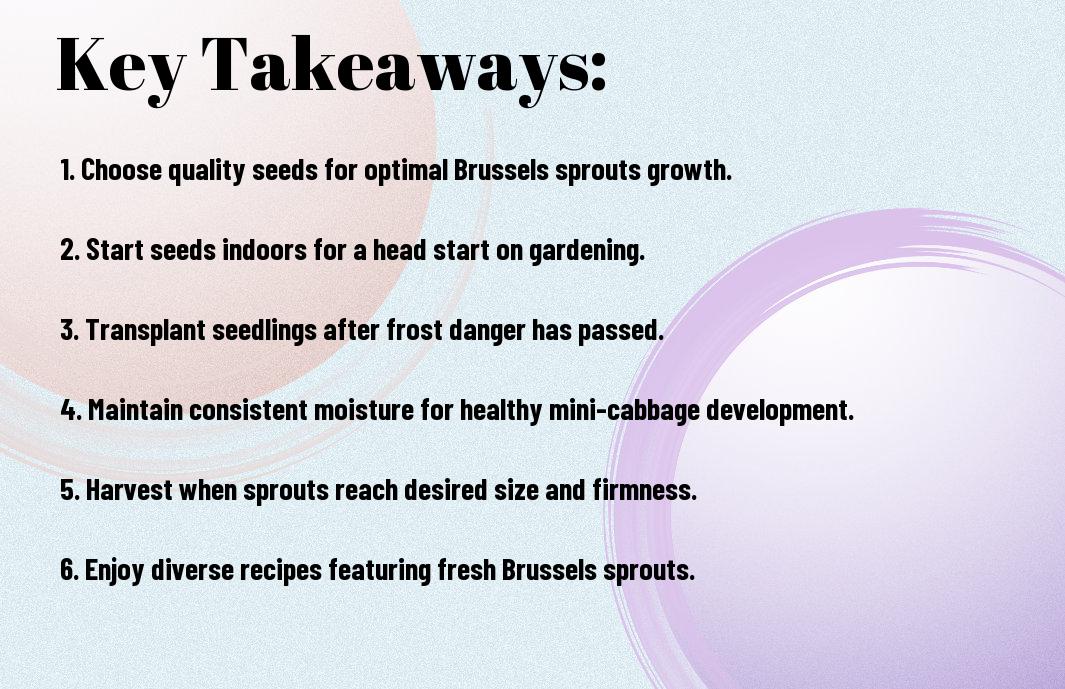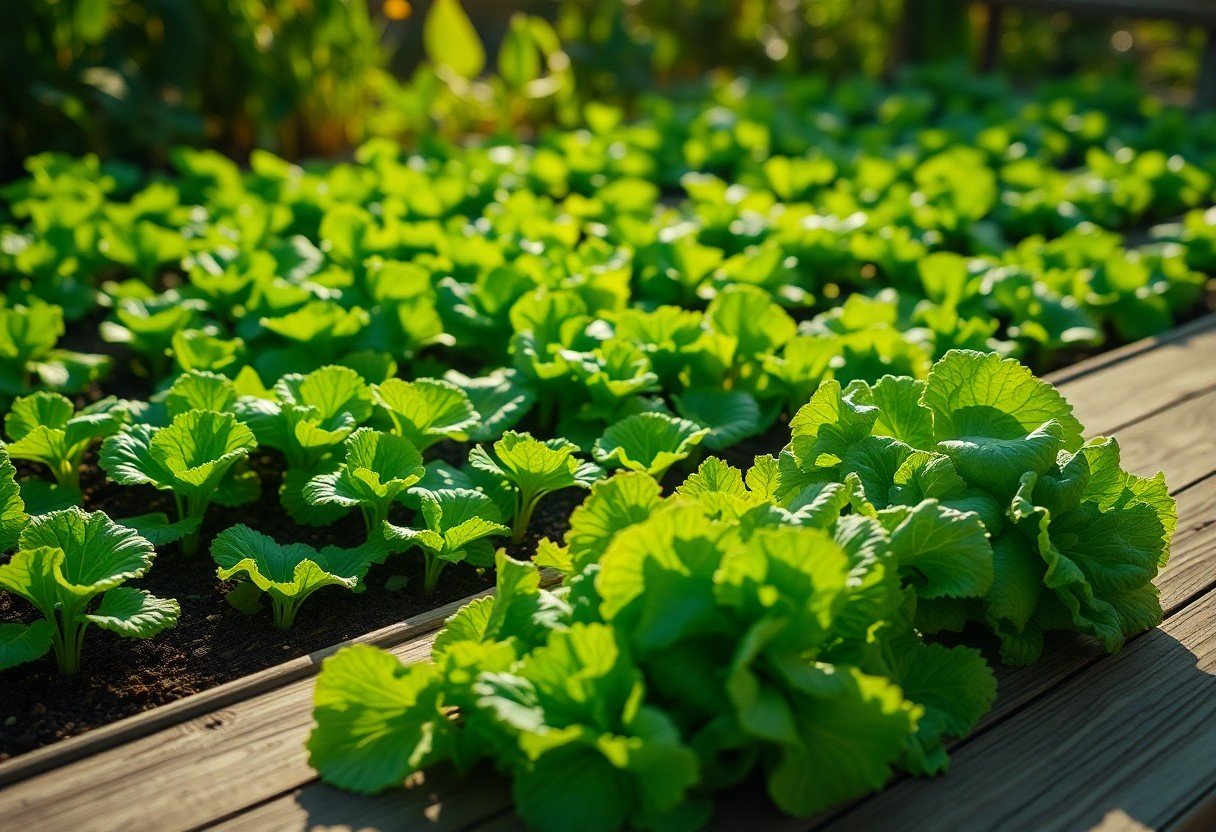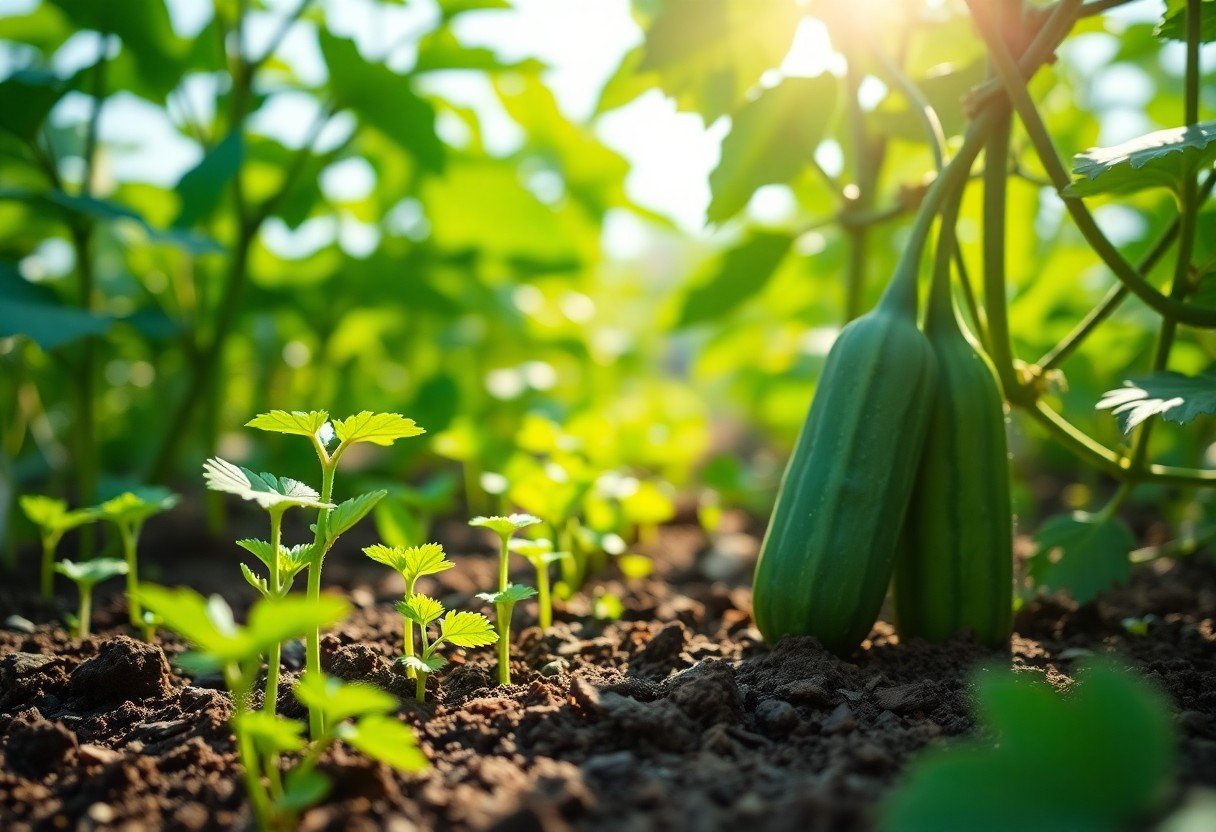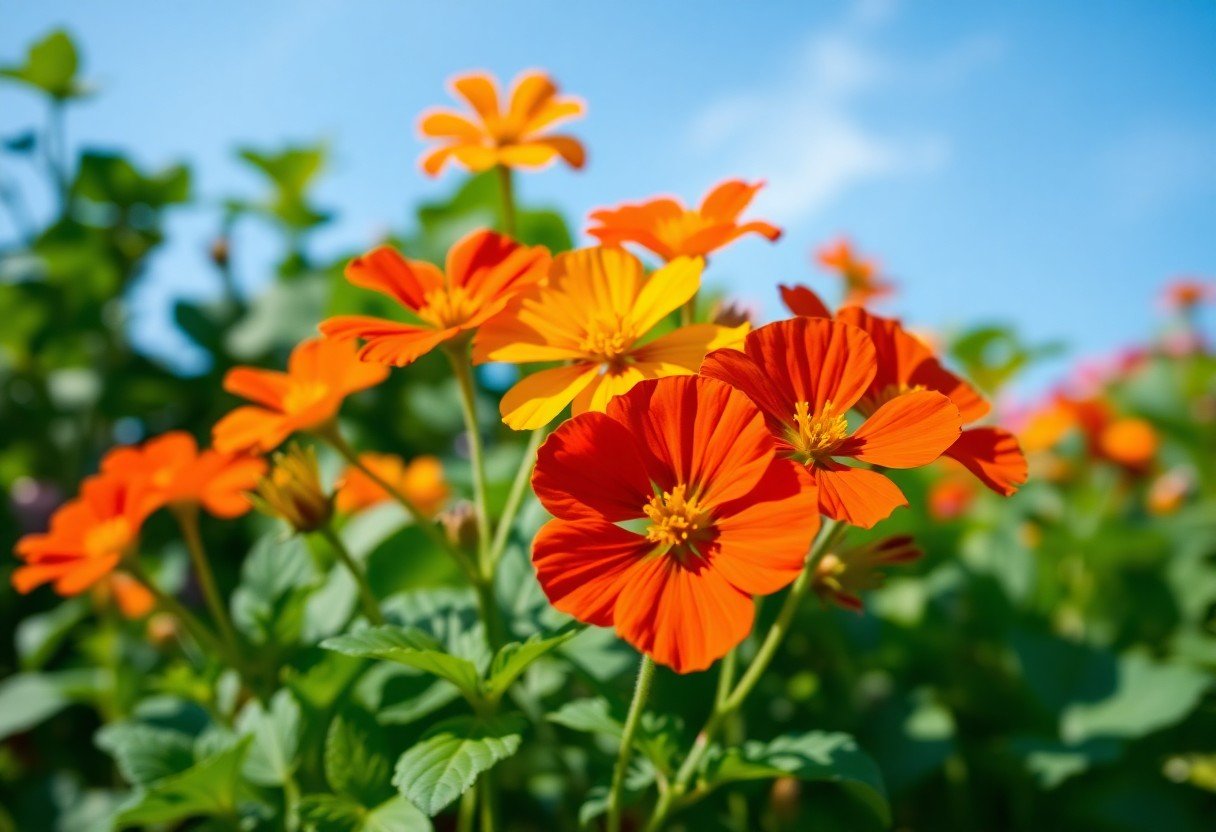Sprouts may be small, but they pack a nutritional punch and are surprisingly easy to grow in your own garden. In this guide, you will discover the step-by-step process of cultivating your own mini-cabbages from seed to harvest. You’ll learn about selecting the right seeds, proper planting techniques, and how to care for your plants as they mature. By the end, you’ll be equipped to enjoy delicious, homegrown Brussels sprouts, elevating your meals and your gardening skills alike.


Understanding Brussels Sprouts
History and Origin
About 2,000 years ago, Brussels sprouts were cultivated in ancient Rome and gradually spread across Europe. By the 16th century, they became a popular vegetable in Belgium, particularly around Brussels, which is how they got their name. These little green gems were often associated with the working class, but they eventually found their way into the kitchens of the aristocracy. Over the centuries, they have gained acclaim worldwide as a nutritious vegetable, beloved for their unique flavor and versatility in various culinary applications.
As you explore into the history of Brussels sprouts, you’ll find they were first recognized and cultivated for their edible buds, which grow along the stem of the plant. The development of different varieties has made them more widely available today, with several cultivars tailored to various climates and taste preferences. Their resilience and ability to thrive in cooler temperatures have made them a seasonal favorite among home gardeners and farmers alike.
Nutritional Benefits
Between their rich nutrient profile and several health benefits, Brussels sprouts stand out as a highly desirable addition to your diet. These mini-cabbages are loaded with vitamins K and C, boasting a significant dose of fiber that supports digestive health. They are also a source of antioxidants, which help combat oxidative stress and inflammation in your body. Eating Brussels sprouts is not only about flavor but also about enhancing your overall well-being.
The nutritional benefits of Brussels sprouts extend beyond their vitamins and minerals. By incorporating these vegetables into your meals, you can support heart health through their beneficial effects on cholesterol levels and blood pressure. The high fiber content helps regulate blood sugar levels and keeps you feeling full longer, which can be instrumental in weight management. Furthermore, the presence of glucosinolates in Brussels sprouts may offer protective factors against certain types of cancer, making these little vegetables both a tasty and empowering addition to your feast.

Selecting Seeds
Types of Brussels Sprout Seeds
Any aspiring gardener should explore the different types of Brussels sprout seeds available on the market. These seeds can vary significantly in terms of growth habits, flavor profiles, and harvest times. Understanding these differences can help you select the most suitable variety for your garden and culinary preferences. Here’s a breakdown of common seed types you might encounter:
| Type | Description |
| Early Varieties | These reach maturity faster, typically yielding sprouts in approximately 85-100 days. |
| Late Varieties | These take longer to mature, often 100-120 days, and develop a more robust flavor. |
| Hybrid Varieties | These are bred for specific traits like disease resistance and climate adaptability. |
| Open-Pollinated Varieties | These can be saved and replanted for subsequent seasons, preserving their genetics. |
Knowing the type of seeds you choose will greatly influence your experience from planting to feasting, as each variety has unique needs and rewards. So, it’s important to evaluate what aligns best with your gardening goals.
Factors to Consider When Choosing Seeds
Brussels sprouts thrive under specific conditions, so selecting seeds that suit your growing environment is imperative. Consider factors such as your climate, soil type, and the average length of your growing season. Additionally, you should contemplate the space you have available, as different varieties may have differing growth patterns, which can affect planting density in your garden.
- Climate suitability: Ensure the variety can thrive in your local climate.
- Soil conditions: Assess whether your soil drains well or retains moisture better.
- Average growth time: Choose a type that fits within your gardening timeline.
- Intended use: Think about whether you’ll be eating sprouts raw, roasted, or in various dishes.
Knowing these factors helps you make informed decisions that enhance your chances for a successful harvest. Your selections will impact the quality and flavor of Brussels sprouts you’re able to enjoy.
Another important aspect when buying seeds is the seed quality. Look for certified organic seeds or those labeled as non-GMO to ensure you’re growing healthy plants. Additionally, consider the seed company’s reputation for producing high germination rates and strong plant genetics.
- Seed freshness: Always check the packaging date to ensure seeds are current.
- Germination rates: Opt for seeds known for high germination success.
- Source credibility: Purchase from reputable seed suppliers.
- Planting instructions: Make sure there are clear guidelines for optimal planting.
Knowing quality factors can greatly influence your results, leading to a bountiful Brussels sprouts harvest.
Planting Techniques
After you’ve chosen your Brussels sprouts seeds, it’s time to focus on effective planting techniques that will set the foundation for your mini-cabbage cascade. To achieve optimal growth, consider starting with your soil preparation, which plays a vital role in establishing strong plants. You’re not just planting seeds; you’re creating an environment that fosters health and resilience for your sprouts to thrive.
Soil Preparation
Around 2 to 3 weeks before planting, you should prepare the soil to ensure a nutrient-rich and well-draining environment. Start by clearing any debris, including weeds or previous crops, from the planting area. Next, test your soil’s pH and nutrient levels, aiming for a slightly acidic to neutral pH of around 6.0 to 7.5. Amend the soil with organic matter like compost or well-rotted manure to boost fertility and improve drainage. This not only nourishes your plants but also supports beneficial microbial activity that will help your sprouts flourish.
Proper Planting Depth and Spacing
Soil temperature will also influence how well your Brussels sprouts grow, so plant your seeds or seedlings when the soil is around 50°F to 85°F. Regarding planting depth, aim for a depth of about 0.5 to 1 inch for seeds, while seedlings can be set at the same depth they were previously growing in their containers. Proper spacing is equally important; you should space them about 18 to 24 inches apart in rows that are 24 to 36 inches apart. This spacing allows for enough airflow and reduces competition for nutrients, giving your sprouts plenty of room to develop.
Another key tip for effective planting involves considering your local climate. If you live in an area with cooler temperatures, you might want to shift to earlier planting dates and a closer seed spacing to help promote faster growth. Conversely, if your climate is warmer, you may opt for larger spacing to ensure your plants have ample room to grow without overheating. Adapting your planting techniques based on your unique conditions will enhance your Brussels sprouts success.
Growing Conditions
All plants, including Brussels sprouts, require specific growing conditions for optimal development. Understanding what your mini cabbages need will guide you to a successful harvest, allowing you to enjoy tender, flavorful sprouts right from your garden.
Ideal Temperature and Light Requirements
After establishing your gardening space, be sure to consider the ideal temperature and light requirements for Brussels sprouts. These plants thrive in a cool climate, and ensuring they receive adequate sunlight will enable healthy growth. Below is a table summarizing these requirements:
| Temperature | 65°F to 75°F (18°C to 24°C) during the day, with cooler nights |
| Light Requirements | 6 to 8 hours of direct sunlight daily |
Watering and Fertilization
Beside temperature and light, proper watering and fertilization practices are important for healthy Brussels sprouts. These mini-cabbages appreciate evenly moist soil that is not waterlogged, as too much moisture can cause root rot. You can also benefit by applying a balanced fertilizer every few weeks to encourage vigorous growth. This approach will help nourish your plants, providing them with the important nutrients they need.
In fact, checking the moisture level in the soil regularly can help you determine when to water your Brussels sprouts. You want to maintain consistent moisture, so feel the soil about an inch deep; if it feels dry, it’s time to water. Furthermore, incorporating organic matter like compost into the soil before planting can enhance fertility and aid in retaining moisture, ultimately leading to more robust plants and a bountiful harvest.
Pest and Disease Management
Unlike many other vegetables, Brussels sprouts are particularly susceptible to a range of pests and diseases, which can hinder your growth efforts and compromise your harvest. Managing these challenges involves a proactive approach that encompasses both prevention and effective response strategies. By understanding the common threats your Brussels sprouts might face and employing best practices, you can help ensure a bountiful and healthy crop. Armed with the right knowledge, you can protect your mini-cabbages from damage and enjoy a successful growing season.
Common Pests and How to Control Them
Below, you’ll find a list of some common pests that may attack your Brussels sprouts, including aphids, cabbage worms, and the notorious root maggot. To combat these pests, it’s effective to employ a combination of cultural practices and organic control methods. For instance, using row covers can physically shield your seedlings from pests and encourage healthy growth, while introducing beneficial insects like ladybugs can help keep aphid populations in check. Handpicking larger pests such as caterpillars can also be a practical solution, allowing you to enjoy your harvest without the use of harsh chemicals.
Preventing and Treating Diseases
For effective management of diseases that may affect your Brussels sprouts, including downy mildew and black rot, it’s necessary to focus on both prevention and timely treatment. Ensuring proper garden hygiene, such as removing infected plant debris and practicing crop rotation, will help minimize the risk of diseases taking hold. Additionally, allow for adequate spacing between your plants to promote good air circulation, which can deter moisture buildup and reduce the chances of fungal infections. If you do notice signs of disease, applying organic fungicides can provide a helpful remedy without compromising the health of your plants.
To strengthen your Brussels sprouts against various diseases, you should also consider selecting resistant varieties, as this can offer necessary protection. Incorporating good watering practices—such as watering at the base instead of overhead during the cooler parts of the day—can help limit moisture on leaves. Furthermore, giving your plants a boost with organic fertilizers rich in nutrients will bolster their overall health, making them better equipped to fend off diseases. With these strategies in place, you’ll find that maintaining a healthy crop of Brussels sprouts is more within reach than you might have thought.

Harvesting Tips
Keep an eye on your brussels sprouts as they approach harvest time, as timing plays a significant role in their flavor and texture. When your sprouts are firm, round, and roughly 1 to 2 inches in diameter, you are ready to begin harvesting. Follow these useful tips to ensure you get the best out of your mini-cabbages:
- Harvest in the morning when the sprout leaves are still moist for optimal freshness.
- Use a sharp knife to cut the sprouts off the stem, ensuring you leave the base intact to encourage further growth.
- Take the sprouts from the bottom of the stalk first, working your way up as the lower ones reach maturity.
- Inspect the foliage for signs of pests or disease, and make sure to harvest any affected sprouts promptly.
Knowing the right techniques for harvesting will lead to the best possible experience with your brussels sprouts, maximizing both your yield and the enjoyment of their unique taste.
When to Harvest Brussels Sprouts
Beside keeping an eye on their size, pay attention to the color and firmness of your sprouts. Ideal harvesting typically occurs after the first frost, which introduces sweetness while reducing any bitterness. The colder temperatures help to enhance their flavor profile, making your brussels sprouts even more delightful at the dinner table.
You can start harvesting as soon as the buds are about the size of a marble, but don’t hesitate to leave them on the plant a little longer to develop even more flavor. By waiting until the sprouts are fully mature, you ensure that each bite is packed with the robust flavor that makes them a favorite in fall and winter recipes.
Post-Harvest Storage and Use
The way you store your harvested brussels sprouts can significantly affect their taste and shelf life. After harvesting, it’s best to remove any excess leaves and place the sprouts in a perforated plastic bag or a loosely closed container to keep them fresh. Store them in the refrigerator, where they can last for up to a week.
Plus, for longer-term storage, you can blanch and freeze your sprouts, retaining their nutrients and flavor for use in soups, stir-fries, or roasted dishes throughout the year. This preparation method ensures that you have delicious, home-grown brussels sprouts on hand, even after the growing season has ended. Whether tossed in salads or featured as a side dish, your fresh sprouts are sure to impress.
Conclusion
Presently, you have a comprehensive understanding of how to cultivate Brussels sprouts from seed to plate, transforming these mini-cabbages into a delightful centerpiece for your meals. By ensuring you provide the right conditions for growth—adequate sunlight, proper watering, and nutrient-rich soil—you can significantly enhance your chances of a bountiful harvest. The journey from planting seeds to enjoying the crispness of home-grown Brussels sprouts can be both rewarding and fulfilling, offering you a unique connection to the food you consume.
As you commence on this gardening adventure, consider experimenting with different varieties and techniques that cater to your specific growing conditions. With patience and attention to detail, your efforts will not only yield nutritious mini-cabbages but also deepen your appreciation for the entire process of cultivation. Enjoy the satisfaction of harvesting your Brussels sprouts and savor the flavors of your labor, knowing that you’ve nurtured these vegetables from their earliest stages to delicious, home-cooked meals.











